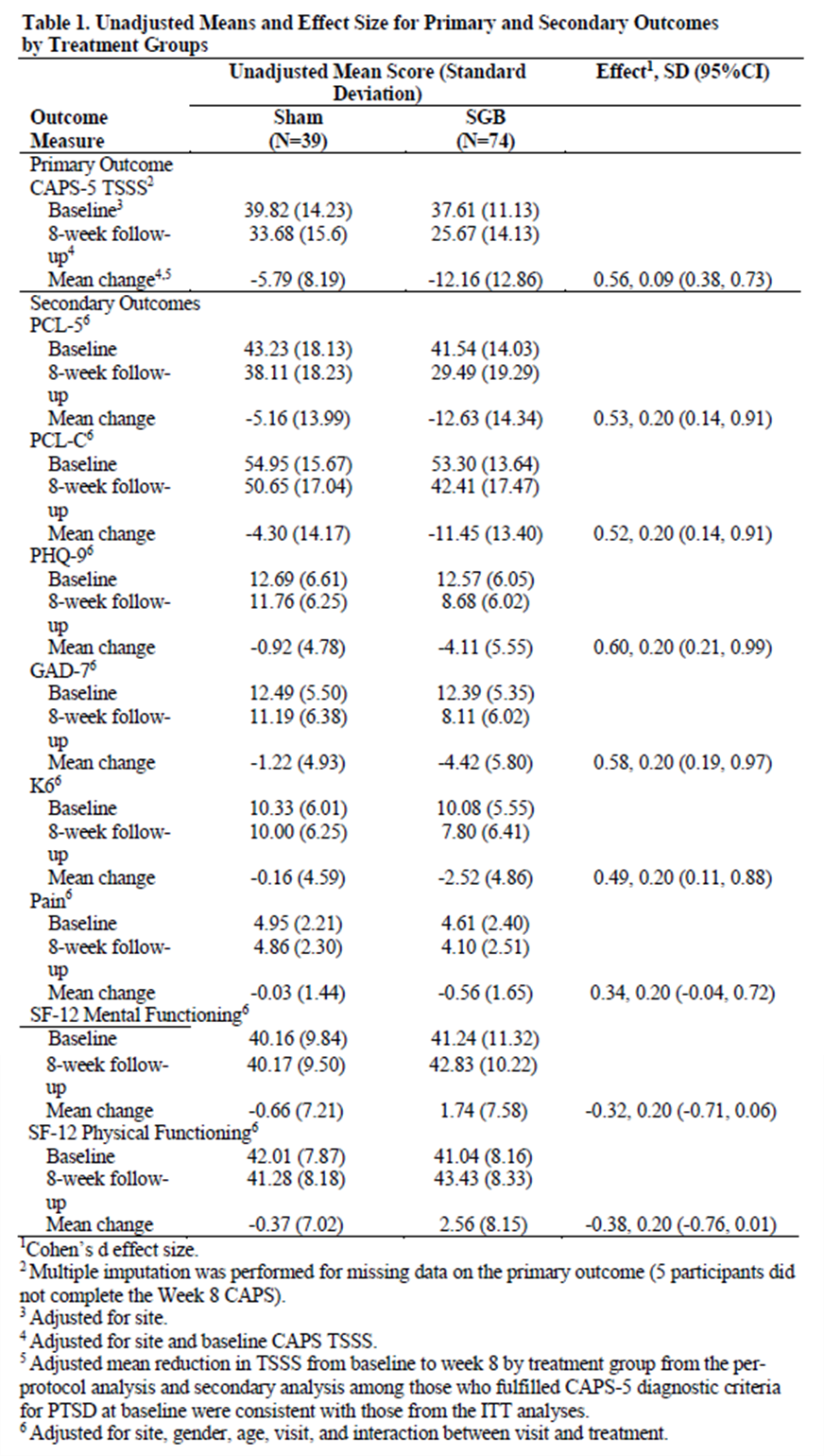Military Operational Medicine (JPC-5)
Effectiveness and Patient Acceptability of Stellate Ganglion Block for Treatment of Posttraumatic Stress Disorder Symptoms among Active Duty Military Members



Posted November 19, 2019
Bradford Walters, M.D., Research Triangle Institute
Kristine Rae Olmsted, MSPH., Research Triangle Institute

Dr. Bradford Walters

Kristine Rae Olmsted
In active-duty Service members, the prevalence of posttraumatic stress disorder (PTSD) is estimated to be 5%-15% and there is evidence that the number is rising.1,2 The chronicity of symptoms and the frequent comorbidity with other mental health disorders leads to PTSD’s debilitating nature and significant impact on a person’s overall quality of life. Evidence-based therapies and treatments for PTSD often take time before they have any effect on an individual’s symptoms; therapies can also produce significant negative side-effects that can reduce patient compliance with the treatment. The stigma associated with behavioral health issues is a significant problem for PTSD treatment because individuals are less likely to accept or adhere to currently available therapies due to the potential negative social consequences associated with behavioral health treatment. Taken together, these factors produce significant barriers to treatment. Rapid, efficacious treatments are critically needed for persons living with PTSD.
In 2015, Dr. Bradford Walters and Co-PI Ms. Kristine Rae Olmsted received an award from the Department of Defense’s Defense Medical Research and Development Program (DMRDP) to investigate the effectiveness and acceptability of Stellate Ganglion Block (SGB), a procedure that has been used since the 1940s to treat a number of common conditions. The team has been exploring the use of SGB for treatment of PTSD symptoms in active duty Service members recruited from three US military hospitals. Subjects in a randomized, placebo-controlled trial were given two treatments of SGB or a sham procedure. Those treated with SGB had a greater reduction in overall total symptom severity scores on the Clinician-Administered PTSD Scale for DSM-5, the gold standard of PTSD assessments, 8 weeks post-treatment compared to those that underwent the sham procedure. SGB treatment was also shown to significantly improve scores on assessments of PTSD-associated symptoms including depression, distress, and anxiety at 8 weeks post-treatment compared to the sham procedure (Table 1). The complete results of this trial were recently published in JAMA Psychiatry and suggest that further trials using SGB as an adjunct for PTSD treatment are warranted.

With support from the DMRDP award, Dr. Walters and Ms. Rae Olmsted were able to complete the first randomized controlled trial suggesting that SGB can be used to effectively treat PTSD symptoms. Future studies that will evaluate SGB as a long-term treatment for PTSD as well as studies that will establish the mechanism of action of the procedure should be pursued to further improve the treatment of PTSD. This trial is a critical first step in identifying novel and effective treatments that will improve the lives of American Service members living with PTSD.
Publication:
Rae Olmsted KL, Bartoszek M, Mulvaney S, et al. Effect of stellate ganglion block treatment on posttraumatic stress disorder symptoms: A randomized clinical trial. JAMA Psychiatry. Published online 11/6/2019. doi:https://doi.org/10.1001/jamapsychiatry.2019.3474
References:
1 Tanielian T and Jaycox LH. (Eds.). 2008. Invisible wounds of war: Psychological and cognitive injuries, their consequences, and services to assist recovery. Arlington, VA: RAND Corporation.
2 Bray RM, Pemberton MR, Hourani LL, et al. 2009. 2008 Department of Defense survey of health-related behaviors among active duty military personnel. Research Triangle Park, NC: RTI International.
Link:
Last updated Friday, December 13, 2024














